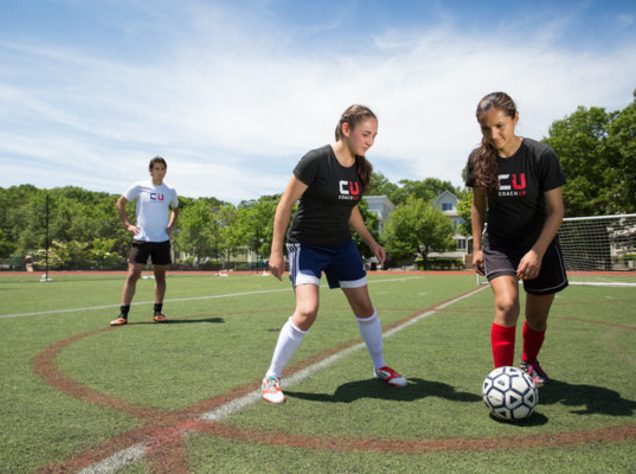Soccer is a low scoring sport and a team’s defense is often what determines its success. As a team sport, defending is a cooperative effort, but every player needs to know how to hold their own one-on-one for the squad to fully operate as a whole. One-on-one defense is not as straightforward as it may seem to the average athlete and there’s specific strategy needed to play it right and intelligently. The three fundamental aspects of one-on-one defending are tackling, positioning, and stance, and CoachUp will tackle them all in the space below — good luck!

Tackling
There is nothing more satisfying for defenders than stealing the ball from an oncoming attacker. To become a good tackler, you need to be a patient player. Attackers love when defenders come sprinting at them uncontrollably because all they need is one good touch and the defender is behind them. Conversely, if you maintain separation with the attacker but relentlessly run with them, they will either pass the ball away or give you an opportunity to step in with a tackle at some point.
You should only tackle when you see a clear opportunity to take the ball. Try to tackle right when the attacker wants to pass or shoot, or when the attacker doesn’t have full control of the ball. Defending is all about your ability to read the attacker, which ultimately comes from good coaching and practice.
Positioning
To defend one-on-one in soccer, you need to know how to position yourself in front of the attacker. Defensive strategy varies based on where the ball is on the field. In the first two thirds of the field, you should try to push the attacker towards the middle of the field. When attackers come to the middle of the field they have to work through more traffic than if they stay near the sidelines. Many wingers are great at finding lanes down the sideline and dribbling into the final third. When defending them one-on-one, you want to force them into the middle where they cannot run with the ball as easily.
In the final third of the field, however, you should try to force attackers towards the sideline and away from your goal. Guiding attackers towards the corner flags in the final third will prevent them from having shots at goal.

Stance
A defender can’t determine the movement of attackers unless he uses a proper defensive stance. When defending, you should face the attacker at an angle with one foot in front of the other. If you are defending in the final third, face your body towards the nearest sideline, but leave space between you and the attacker. You want to trick the attacker into thinking he has an opportunity to move forward when he’s really dribbling away from the goal. Although stealing the ball from your opponents is important, positioning is the key to defense in soccer.
(Related: Read about shielding the ball to keep possession here.)
Huddle Up
Much like riding a bike, defending in soccer is not something you can wake up and master. It will take years of practice and hard work to even just experience most of the scenarios you’ll face at the higher levels of the sport. So, don’t be afraid to experiment to find out what works and what doesn’t. Your success as a defender will hinge on your accountability and adherence to these guidelines. If you can perfect your positional play and time your tackles, you will become a human wall on defense.
But, if you’re still struggling with one-on-one defending, consider booking one of CoachUp’s private tutors. Our team has loads of experience that they can teach you in order to prepare for your next big game. The process is proven and athletes that train with us see improvements almost immediately — so what are you waiting for?
Be prepared for the biggest moments by mastering the small ones off the field.
How useful was this post?
Click on a star to rate it!
Average rating 3.3 / 5. Vote count: 3
No votes so far! Be the first to rate this post.



